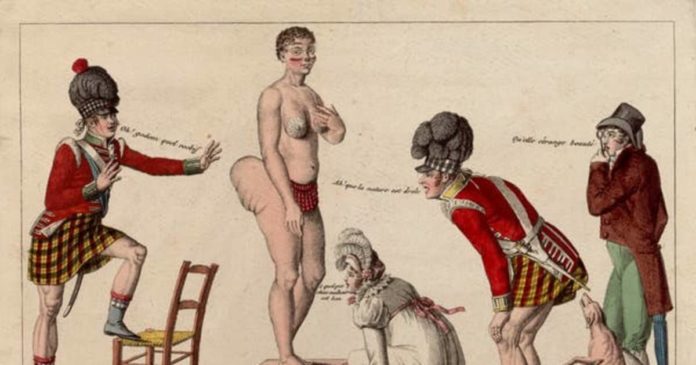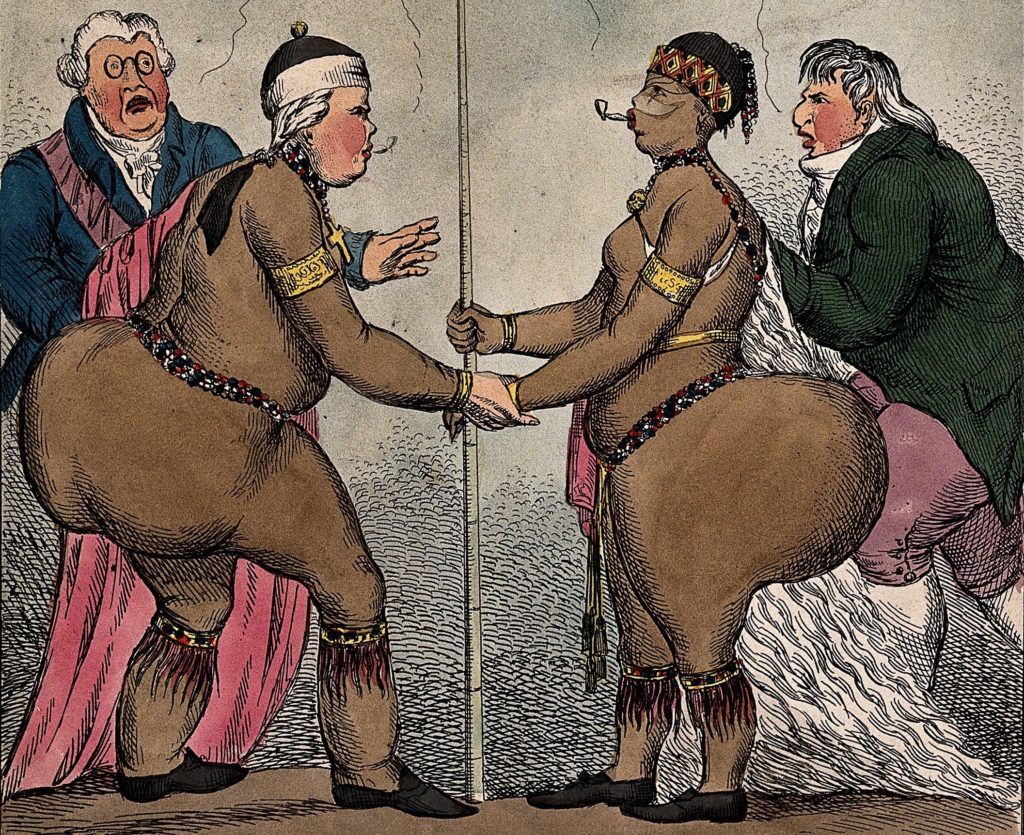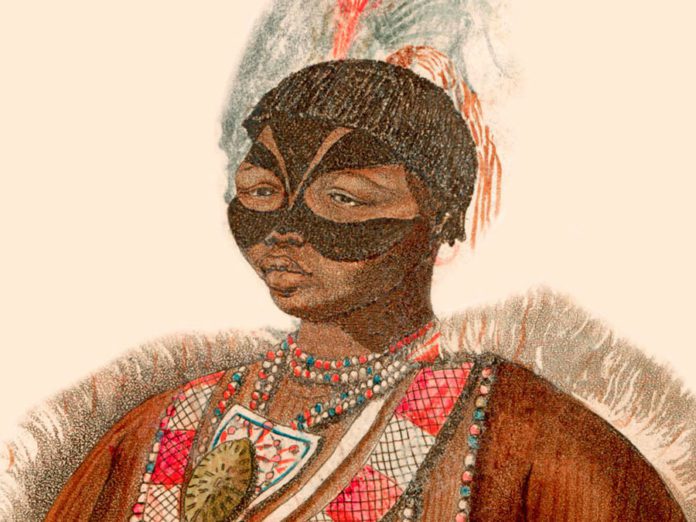Sarah Baartman (born 1789) was a South African woman who died on December 29, 1815, in Paris at 26. According to sources, her death resulted from “inflammatory and eruptive disease,” which is related to alcoholism, syphilis, and pneumonia. Her remains were initially displayed at the Museum of Man in Paris,’ but she was finally returned to South Africa and was laid to rest on August 9, 2002.
Baartman spent her early childhood in Hankey as a servant on colonial farms. She later moved to Cape Town around the period when Dutch colonialists came into conflict with the indigenous people of the Eastern Cape, popularly known as the Khoisan people. Many of these people were absorbed into the labor system of the colonialists at that time. That’s when Sarah came in contact with the Cesars, and her life changed forever.
Sarah Baartman Was Sold Into Slavery and Became A Show Symbol In Europe
While she was a property of the Cesars, Sarah Baartman’s features caught the eye of a Ship Doctor named William Dunlop who later made the Cesars sign over ownership to him. Dunlop, just like many other European men at the time, was fascinated by Sarah’s physical features. She had the characteristic Khoisan large and robust buttocks which made her a centre of attraction. Dunlop saw this as an opportunity to make a fortune. Sarah thus became a show symbol in Europe after signing a contract to work as a domestic servant (slave trade had been abolished at the time) and also be exhibited for entertainment purposes.
Sarah was to be paid a portion of the earnings from her exhibitions after which she would be allowed to return home to South Africa after 5 years. This never happened as Sarah’s slavery continued until she eventually died. She was put on display at shows, being displayed for sexual purposes for anyone who could afford the fee. The richer men in the society who could afford an even higher fee got the luxury of touching her and also got private shows. It is pertinent to note that Baartman was illiterate at the time she signed the said contract.

Sarah Endured So Much Hardship In The Years She Spent As A Slave On Display
Sarah Baartman’s life was full of hardship. She is reported to have lost her mother when she was only 2 years old and later lost her father when she was a teenager. She is also said to have lost her baby and her partner also got murdered. According to history, there is evidence that she actually lost two babies as opposed to just one child. After being sold to William Dunlop, life took an even more tragic turn for poor Sarah as she became an object to be displayed for nudity in London. She was later taken to France where her exploitation became even more intense as she was being sold to an animal handler.
It is told that she was given instructions like an animal and her lady parts were studied as an object of sexual peculiarity. Subsequently, she was said to have gotten herself into the business of prostitution, a situation many still believe she was forced into. Many people are also of the opinion that S. Reaux, the animal handler, allowed Sarah to be sexually abused by almost anyone who was lusting after her peculiar features and he was able to gain a lot of profit from her defilement.
Following this new development, Sarah began to engage in alcohol excessively and it is easy to assume at this point that she had begun to lose all hope as well as her self-worth. In a nutshell, Sarah was the main character in freak shows, made to show off her large bottom and outsized genitals in museums, circus shows, and even universities to be studied.
The Tragic End of Sarah Baartman and What Became Of Her Remains
Sarah Baartman died on the 29th of December, 1815, in Paris at the age of 26. According to sources, her death was a result of what was referred to as “inflammatory and eruptive disease”. Other sources are of the opinion that her death could possibly be as a result of diseases related to alcoholism, syphilis, and pneumonia.
It appears Baartman continued to be violated even in death as her remains were mutilated and displayed in Paris’ Museum of Man. It is said that Georges Cuvier, a French naturalist who had an intense interest in Sarah, had dissected her body after he had made a plaster cast of it, and had also gone ahead to preserve her skeleton, pick her brain along with her genitals, and put them on display at the museum until 1974. In the midst of all these, Cuvier never conducted any autopsy on Sarah’s body. He was only interested in using her parts to prove his theory of racial evolution.
It was when Nelson Mandela became president of South Africa in 1994 that he began to push for the repatriation of her remains to her hometown in South Africa. He also asked for the plaster cast that Cuvier had made of her remains. The French eventually gave in to Mandela’s demands and Sarah’s remains were finally returned to South Africa and was laid to rest on August 9, 2002.

How Her Image Has Evolved Over Time and What It Now Symbolizes
Over the years, the memory of Sarah Baartman has metamorphosed into more positive ones. South Africans have gradually tried to replace the not-so-pleasant circumstances surrounding her lifetime and portray her as an epitome of colonial exploitation of black people. In another twist, what is now known as the Baartman body now trends on social media, where Black women are taking advantage of their physical features to appeal to their audiences and also to gain recognition or acceptance from both the beauty and entertainment industry.
According to a publication titled “How Sarah Baartman’s Hips Went from a Symbol of Exploitation to a Source of Empowerment for Black Women’’ by Rokeshia Renne Ashley, Black women are taking control of their objectification and commodification to earn money.
Sarah Baartman has since been buried in her homeland where she is recognized as an icon for women who still face sexual and racial abuse.
